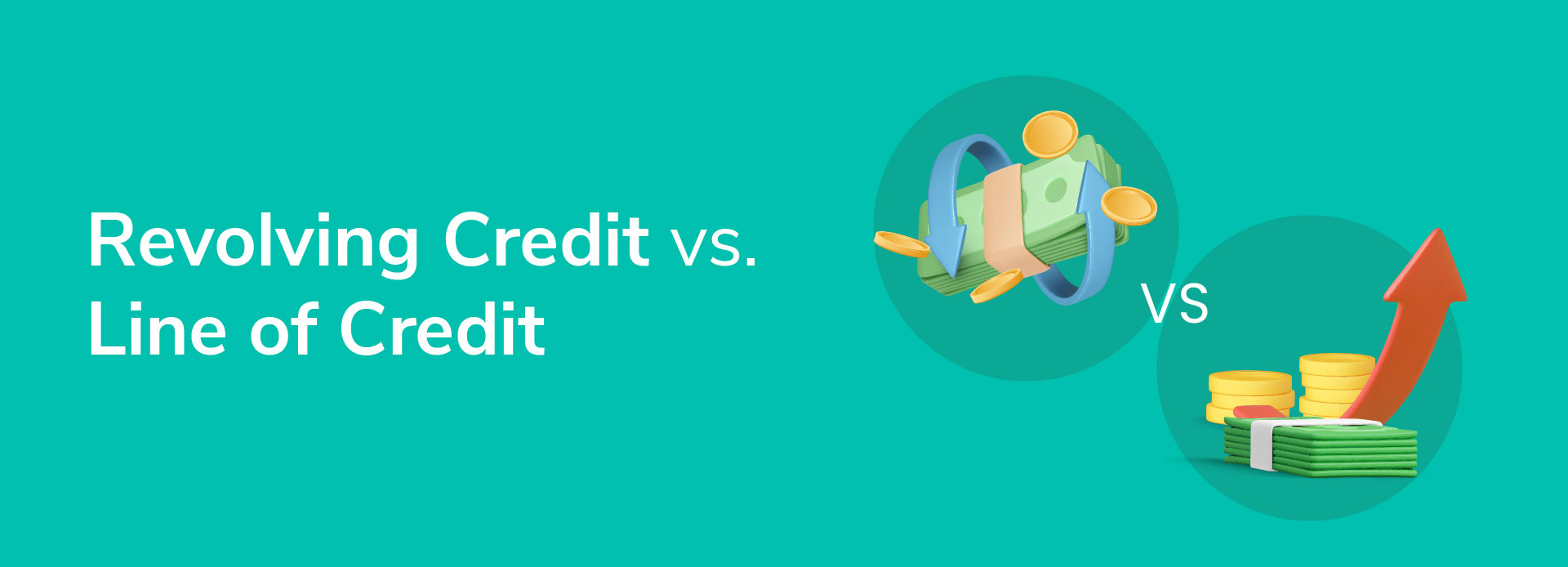
Difference Between Revolving Credit and Line of Credit
07 June 2024 | By INDIE
For business owners, maintaining a steady flow of funds is crucial for day-to-day operations, expansion plans, and unforeseen emergencies. Whether it's payroll during lean months, a sudden growth opportunity, or an unexpected expense, there are nearly endless needs for utilizing funds. Traditional loans may not be the right option for such needs, as they come with lengthy application processes and rigid repayment terms. They may not always provide the flexibility needed to manage fluctuating cash flows. This is where the concept of credit lines becomes invaluable.
Revolving credit and line of credit are two such ways that can provide your business with a lifeline during times of financial uncertainty. These two terms often leave people scratching their heads. They are like pots of money that you can dip into when you need cash, but how they work and when you should use them is where the differences lie.
In this blog, we'll walk you through the line of credit vs. revolving credit comparison, ensuring you understand everything without getting lost in the jargon.
More About Revolving Credit
Revolving credit is a dynamic financial resource that can offer a reservoir of funds accessible on an ongoing basis. It is a flexible borrowing arrangement wherein individuals or entities receive a predetermined credit limit, from which they can draw funds as needed, with the liberty to repay and reuse them cyclically.
The mechanism is straightforward: Once you receive a designated credit ceiling, you can utilize any portion of it as required. Subsequently, you are obligated to make periodic repayments, typically calculated as a percentage of the outstanding balance or a fixed sum. Notably, the essence of revolving credit lies in its regenerative quality, as the available credit replenishes upon repayment, ensuring a continuous borrowing cycle.
Recommended Read: Benefits of Indie Line of Credit
More About Line of Credit
A line of credit is another flexible financial instrument designed to offer access to funds as needed without borrowing a lump sum amount upfront. It provides borrowers with the freedom to withdraw funds up to a predetermined limit as and when required.
You should also know that lines of credit can be either revolving or non-revolving. In the case of non-revolving lines of credit, the available credit does not replenish after you make the payments. Once you've utilized the credit line and subsequently paid it off, the account will typically be closed, rendering it unavailable for further use. This contrasts with revolving lines of credit, where the credit limit replenishes as payments are made, allowing for continued access to funds over time.
Are Lines of Credit Different from Traditional Loans?
1. Purpose Restrictions
Traditional loans, such as home loans, student loans, etc., often come with specific purchasing purposes. Borrowers need to inform the lender of the intended use of the funds in advance. In contrast, lines of credit offer greater flexibility, allowing borrowers to access funds for various purposes without specifying beforehand.
2. Payment Structure
With traditional loans, borrowers receive a lump sum upfront and begin accruing interest immediately. Lines of credit operate differently. With a credit line, borrowers have the flexibility to access funds as needed, up to a predefined limit. They need to pay interest only on the amount borrowed, and payments tend to be more irregular, reflecting the variable nature of borrowing from a line of credit.
Let’s look at the last important thing here.
Does a Line of Credit (Revolving or Non-Revolving) Hurt Your Credit?
● Revolving accounts, including lines of credit, can potentially impact your credit score if managed irresponsibly. Making late payments or utilizing a significant portion of your available credit may lead to a decline in your credit score.
● Conversely, responsible use of revolving accounts can benefit your finances and contribute positively to your credit profile. Making timely payments and maintaining optimal credit utilization demonstrates financial responsibility and can enhance your creditworthiness over time.
Disclaimer: The information provided in this article is generic in nature and for informational purposes only. It is not a substitute for specific advice in your own circumstances. Hence, you are advised to consult your financial advisor before making any financial decision. IndusInd Bank Limited (IBL) does not influence the views of the author in any way. IBL and the author shall not be responsible for any direct/indirect loss or liability incurred by the reader for taking any financial decisions based on the contents and information.




